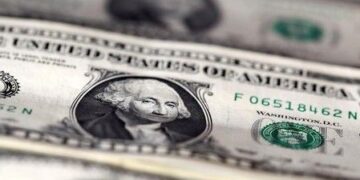Gold was the clear winner of the growing global anxiety
caused mainly by U.S. President Donald Trump and his trade wars. Since the
beginning of the year, the gold
price chart has seen a 30% increase, repeatedly reaching new all-time
highs. As is often the case, gold mining stocks have risen in tandem.
For instance, Newmont’s shares are up 44% year-to-date, and
Barrick Gold’s shares have risen 30%. This may not end the rally if Goldman
Sachs’ forecasts hold true. The bank predicts gold could reach $3,700 per ounce
by the end of the year, and possibly $4,000 by mid-2026, especially if
U.S.-China tensions remain unresolved.
What exactly has been driving this gold rush?
As mentioned above, uncertainty was triggered mainly by
Trump’s tariffs on a long list of countries in the name of improving the U.S.
trade balance. The problem is that such protectionist measures risk fueling
inflation at home, which could force the Fed to keep
interest rates higher for longer.
In addition, Trump’s increasingly vocal criticism of Fed
Chairman Jerome Powell aims to pressure the central bank to ease monetary
policy. Should the Fed relent (something it should not do, as it is supposed to
operate independently of both Congress and the president), the consequences
could be dire.
Coupled with another round of inflation rebound, this could
seriously damage global confidence in the U.S. financial system. Judging by the
continued fall in the U.S. dollar index and the growth in Treasury yields
(unusual in turbulent times like the ones we are living in now), it is already
happening.
Then there is the geopolitical wild card.
Trump claims to be negotiating peace deals in Ukraine and
working to de-escalate tensions in the Middle East, especially with Iran. But
so far, there has been little real
progress. If these talks fail and escalation replaces resolution,
investors will likely return to betting on safe-haven assets like gold.
Will the rally continue?
Despite the bullish forecasts from the banks, the market
seems overheated with a correction looming. It is worth noting that
approximately one-third of global gold demand comes from jewelers, who have
recently started to cut back on their purchases. If geopolitical tensions ease
slightly, a pullback could follow.
And then there is Bitcoin, often called “digital gold.” It
has been rising along with gold recently, reviving the old narrative of
cryptocurrencies as a safe-haven asset. Time will tell if Bitcoin can live up
to that name, but with Trump in the picture, there’s no doubt we’ll have plenty
more catalysts for price swings, in both directions.
ForexLive.com
is evolving into
investingLive.com, a new destination for intelligent market updates and smarter
decision-making for investors and traders alike.
















